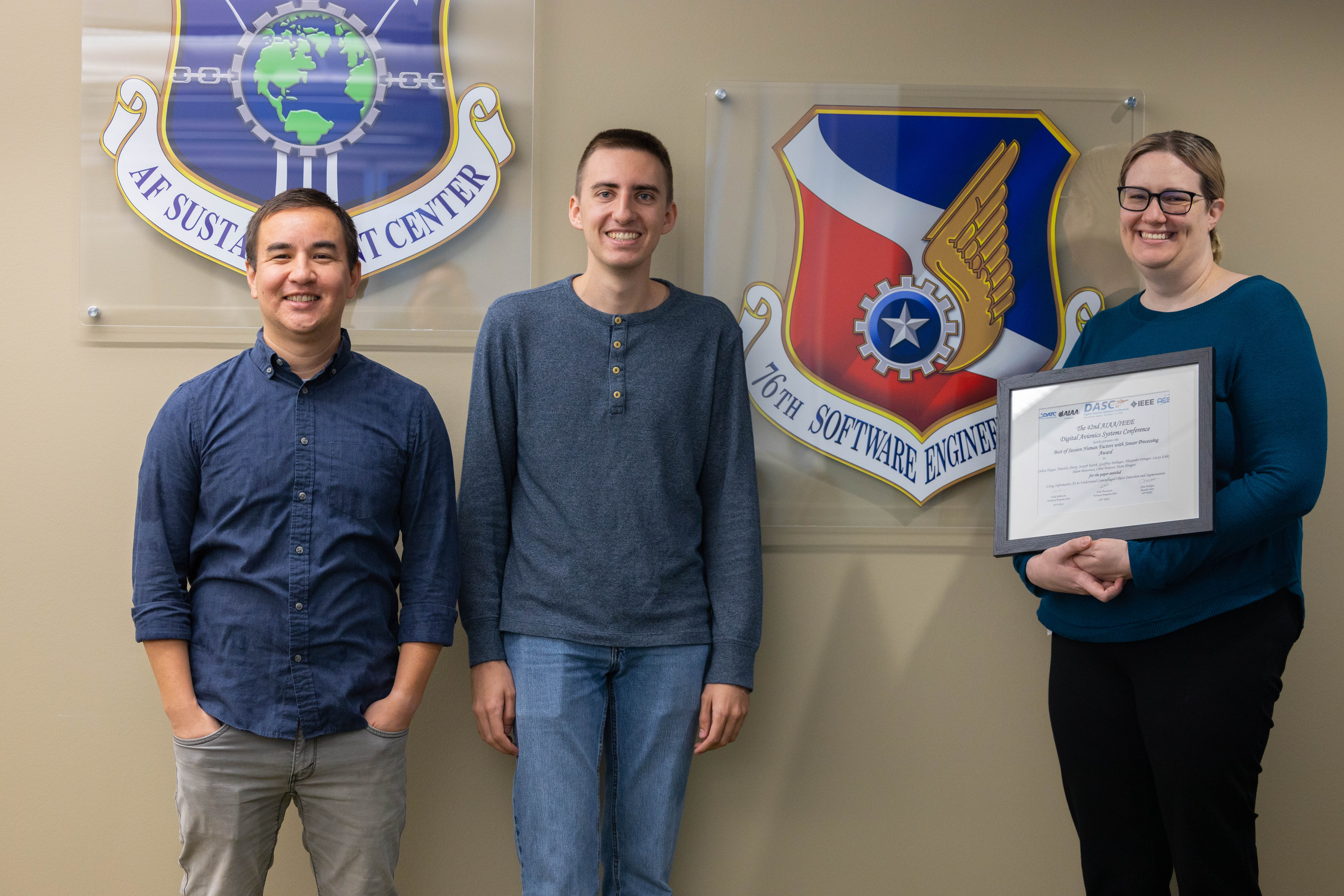
Department 70 Researchers Win Best in Session Award
By
In October, Department 70 researchers Timmy Sharp and Joseph Karch presented a research paper at the Digital Avionics Systems (DASC) 2023 Conference in Barcelona, Spain. The research was spearheaded by Debra Hogue as a part of her studies for her PhD program. Additional contributions were made by Timothy Sharp (76 SWEG), Joseph Karch (76 SWEG), Geoffrey Dolinger (76 SWEG), Alexander Stringer (76 SWEG), Lacey Schley (OU), Adam Bowersox (76 SWEG), Dr. Chris Weaver (OU) and Dr. Dean Hougen (OU). The team’s paper received the Best in Session award for the Human Factors with Sensor Processing session.
Their research integrates self-explainable artificial intelligence (S-XAI) and camouflage object detection (CODs). It creates a framework called FACE (Find and Acquire Camouflage Explainability) which utilizes machine learning (ML) models and a decision hierarchy to identify camouflaged objects, rank the relative strength of their camouflage, distinguish the parts of camouflage that break the concealment illusion, and provide results in a human-readable format. This process details what features on the camouflaged object the ML system was “focusing” on when making its decisions. The goal of this project is to provide researchers with a tool that will analyze and explain areas with weak camouflage.
FACE has the potential to advance camouflage detection capabilities by facilitating human-in-the-loop analysis. Often, ML approaches create systems with inner workings that are opaque or a black box. Integrating S-XAI into camouflage detection enables the system to provide confidence and increase project adoption by peeling back the black box layer. Cataloging these features enhances our understanding of current camouflage techniques and their effectiveness. Future efforts will explore new camouflage and detection strategies.
Department 70 is the applied research team for the 76 SWEG. This team is dedicated to conducting basic and applied research in emerging technologies to develop the organic government expertise for Air Force customers. The team partners with local universities to facilitate research opportunities that are aligned with the Air Force Science and Technology Strategy and 76 SWEG strategic objectives. The collaborative research conducted, with these academic partners, focuses on producing journal and conference publications. The publications support the 76 SWEG educational programs that are funding internal Master’s and PhD students. Department 70 operates out of the Two Partners Place facility on the University of Oklahoma’s (OU) campus. This strategic proximity to OU fosters a dynamic exchange of ideas and promotes innovation within academic and military spheres.